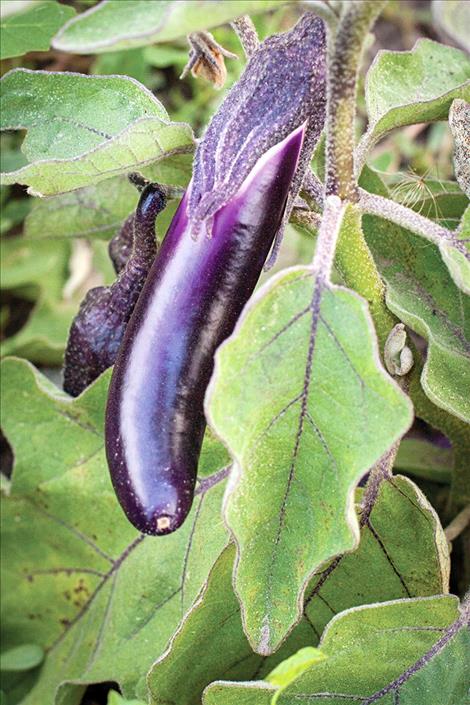Growing eggplant
Hey savvy news reader! Thanks for choosing local.
You are now reading
1 of 3 free articles.
Eggplant is not often grown by home gardeners in Western Montana, but a good crop can be harvested and seed saved for next year if you give it what it needs. Eggplant is native to warm, subtropical regions in India and China and has been cultivated for more than 6,000 years. The botanical name of the species is Solanum melongena and it is a member of the plant family Solonaceae, which means it is related to tomatoes, peppers, potatoes and petunias. I grow eggplant in my garden in the same rotation group as these relatives. (It is important to rotate your garden crops in family groups so that they are not planted in the same spot for four years or more. This builds soil and reduces risks of disease and insects.)
Since eggplant starts growing rather slowly, it should be started inside and transplanted out to the garden later, after danger of frost is past. I start mine inside under lights about Feb. 1, and grow them in bright light. Here in the Mission Valley, our average last frost in spring is about May 17 or so, but of course this can vary by a couple weeks each way in any given year. Eggplant seed will germinate from 60-95 degrees F, but 75-90 ideal. The time to germination is 14-21 days.
Harden off your plants before setting out, giving them more and more time outside each day and more sun, for about a week. Plant them in full sun. I usually transplant my started eggplants about May 21 to June 1, unless it is very cold and rainy. Eggplants will grow well under hoop row covers with open ends, because they really like heat, especially at night. Your soil pH should be 5.5 to 6.8 for best success. Set plants about 18 inches apart all ways. The plants grow best when temperatures are 50–95 degrees, and 70-75 degrees is ideal.
Protect your young plants from cutworms with jugs or cans or paper rings. Water your plants regularly, allowing them to get just sub-moist, then water. In my experience they seem to prefer even moisture. Try to water early in the day only, allowing leaves to dry before nightfall. Watch for aphids, their worst pest. You could use fabric over hoops during summer to prevent insects. Some other pests that might bother eggplant include: gophers; leafhoppers; cutworms, Colorado potato beetles, flea beetles, mites, stink bugs, nematodes and tomato fruit worms. Some diseases you might encounter are early blight, late blight, tobacco mosaic, fusarium, and verticillium wilt. An application of garlic spray early in the season and followed again with the same once a month until autumn will discourage leafhoppers, which carry and continue into fall to prevent curly top.
To harvest your eggplant, gather when full size, while skin is still shiny and when fruit comes away from the vine easily. If the skin has turned dull, the seeds are ripening and it is too old, but of course an over-ripe fruit is worth saving for seed for next year. Check and pick every three days to keep plants producing. The first eggplants should be ready about Sept. 1. After harvesting keep the fruit cool, above 55 degrees, in high humidity, and out of the sun. Fruits last about seven days.
A variety that has been successfully grown for seed here in our area is ‘Early Black’ eggplant. It matures 65 days from transplanting out. Another good variety is ‘New York Improved,’ and heirloom American variety from 1865. It will be ready to eat in about 75 days from transplanting.
















